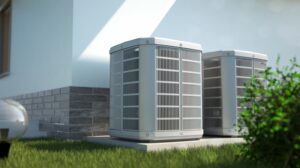It’s officially fall now, and your heat pump just went through a tough summer of keeping your home cooled down. Since a heat pump isn’t an air conditioner, despite working similarly to one, it will continue to run for you during the coming winter—but now switched over to heating mode so it draws heat from outdoors and moves it into your home.
You want the best, most dependable heating performance from your heat pump for the winter. We want you to have that as well! We’ve put together a list of four ways you can improve your heat pump’s performance. When you need heat pump service in Bloomington, MN, make sure to call the team at Residential.
1. Schedule fall maintenance.
This is a task that some heat pump owners often forget about. They schedule maintenance service for their heat pumps in the spring, and then think that’s all that’s necessary. Because a heat pump serves as both the heating and cooling system for a home, it has to be treated as two separate systems when it comes to maintenance.
After all, if your heat pump just worked hard during the summer, you won’t want all that wear and tear to carry over to its winter performance. Regular maintenance twice a year is the most important way to improve heat pump performance and ensure a long service life.
2. Regularly change the blower filter.
The blower filter is the filter located either next to the blower assembly on the HVAC cabinet or behind the return air duct grill in the house. This filter protects the interior of the heat pump from the dust and debris that will come through the return air ducts, but it isn’t self-cleaning.
After 1-3 months, it will become too congested and start to affect airflow. The heat pump will undergo greater strain because of this and may even overheat. Make sure you maintain a regular schedule of changing the filter throughout the winter and the rest of the year.
3. Keep the area around the outside cabinet clear.
For your heat pump to work effectively during the winter, its outside cabinet needs to have a clear area of about a foot around it so it can draw air from which it will extract heat. Plants and branches that are too close to it will make its work much harder. You’ll also need to shovel snow away from the cabinet over the season. Make periodic checks on the cabinet so it’s kept clear.
4. Maintain lower thermostat temperatures.
To avoid placing too much stress on the heat pump, keep the settings on your thermostat down as low as you find comfortable. Raising the thermostat higher and higher can overtax the heat pump and lead to it abruptly failing. We recommend a daytime setting of 68°F when people are home, lowering it by a further 8°F during the night or when the house is empty.

